The Magic of Mathematics
2011, By JMW
We are so familiar with the symbols of basic mathematics that we tend to forget their beauty. We learn them at school, employ them without thinking in everyday tasks even if that is by way of a calculator, and they appear before us on the keyboard whenever we start up our desktop computers. And while many mathematicians would contend that there is an innate beauty in numerical concepts, the man in the Mansfield street would see these symbols as mundane. By transforming these symbols, by sleight of hand so to speak, we can suddenly appreciate their hidden grandeur.
JMW chose a brass snooker cue rest as a plus symbol (John Parrott Leisure), used a steel spindle bar as the minus symbol (B&Q), then rotated a plain stainless steel house number 11 plate 90 degrees to the left to create an equals sign (Homebase), turned a piece of plastic piping (B&Q) covered in multi-coloured fabric (Wilkinson) into a division sign with medium-size marbles (houseofmarbles.com) superglued in top and bottom, fashioned the multiplication sign from travertine mosaic border tiling (B&Q) with some of the square tiles covered in acrylic paint and then converted a black pencil tile (B&Q) into the percentage sign using golf balls (Woodford GC pro's shop) top and bottom. Various semi-circles were made using a protractor, a circle using the top metal cover from a malt whisky box (Ardmore), squares using a Morrison's cinnamon jar and a triangle from a school set (Tesco). The quick-drying acrylic Reeves paints (Tesco) were ingeniously squeezed into beer bottle tops serving as miniature palettes.
And to add a final witty numerical flourish, the artist signed his initials on the 122 x 61cm MDF board (B&Q) covered in household paints (Wilkinson) using the binary code alphabet, viz: 01001010 (J) 01001101 (M) 01010111 (W). Neat.
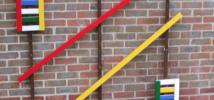 Bizarre Bazaar
Bizarre Bazaar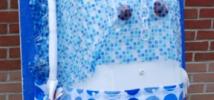 En Suite
En Suite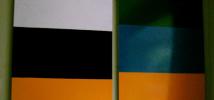 Fibonacci Duo
Fibonacci Duo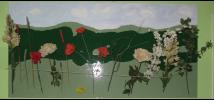 Artifice
Artifice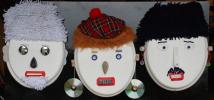 Lavatory humour
Lavatory humour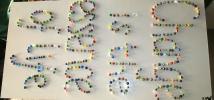 Change
Change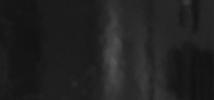 The Art of Darkness, 2012
The Art of Darkness, 2012 Cloud necklace
Cloud necklace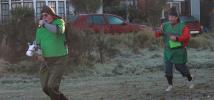 Performance Art
Performance Art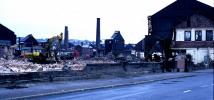 Photographs
Photographs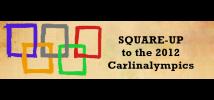 Square-up to the 2012 Carlinalympics
Square-up to the 2012 Carlinalympics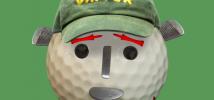 Captain Niblick – the world's worst golf skipper
Captain Niblick – the world's worst golf skipper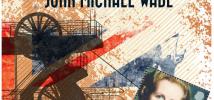 The Day Before Yesterday - a tour of Britain in 1985
The Day Before Yesterday - a tour of Britain in 1985 The Old Colonial Boy
The Old Colonial Boy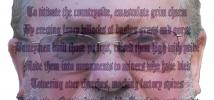 JMW biography
JMW biography